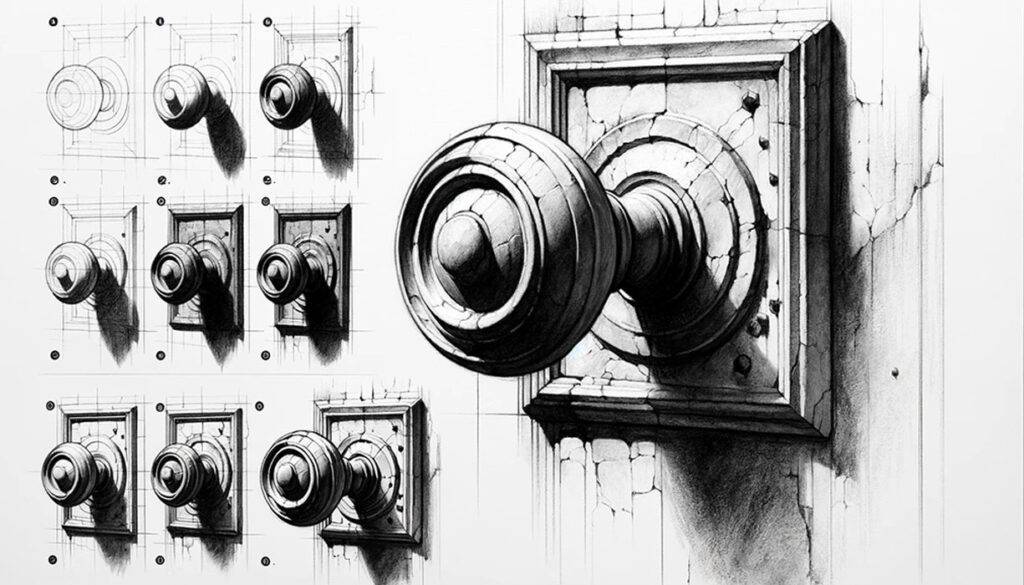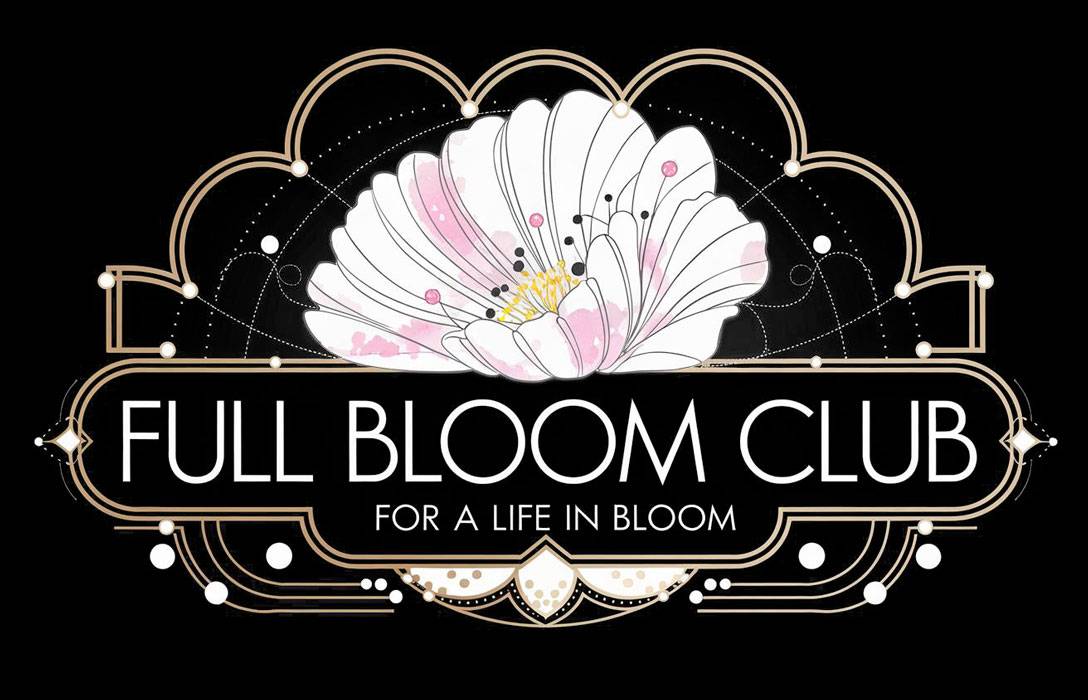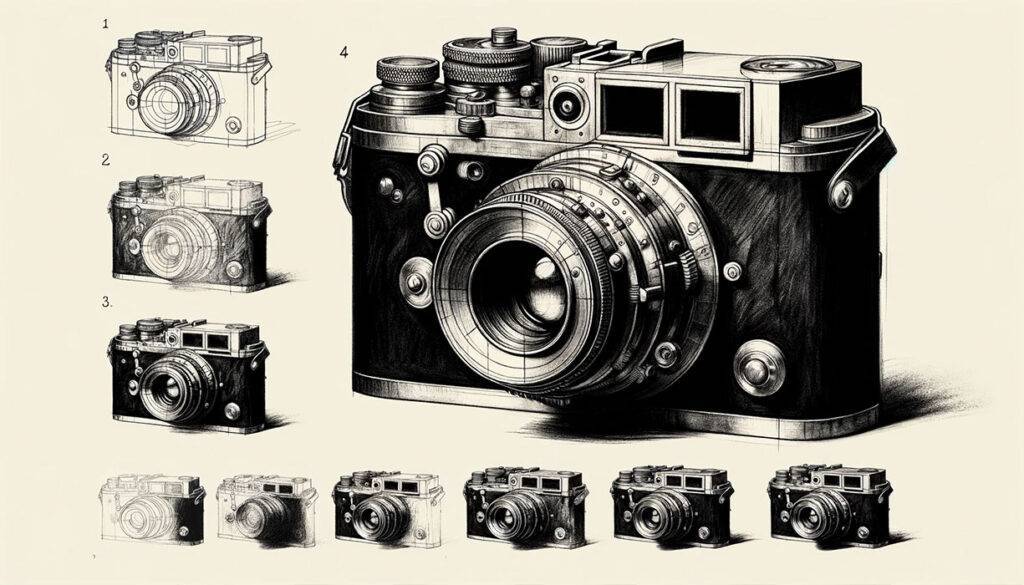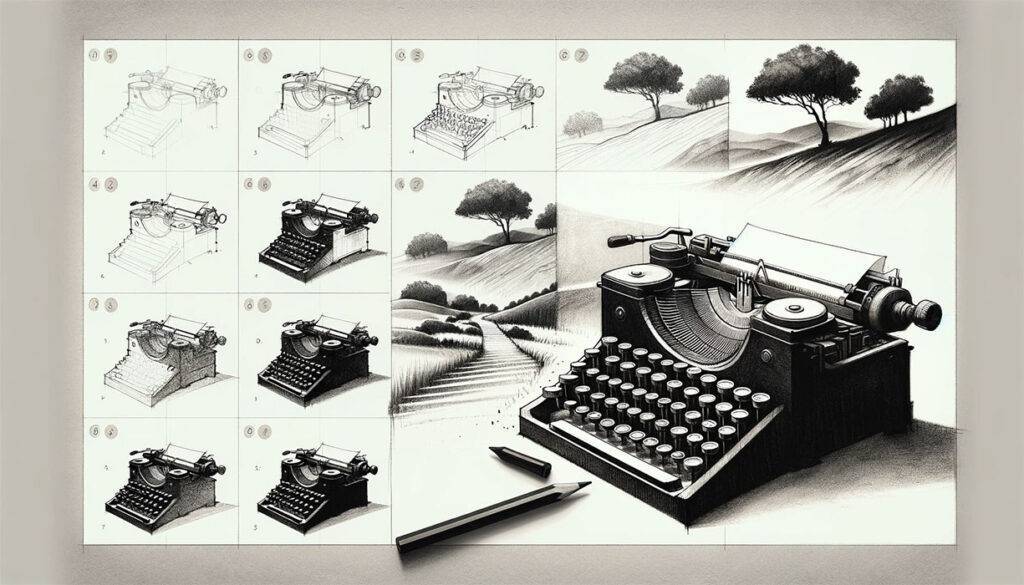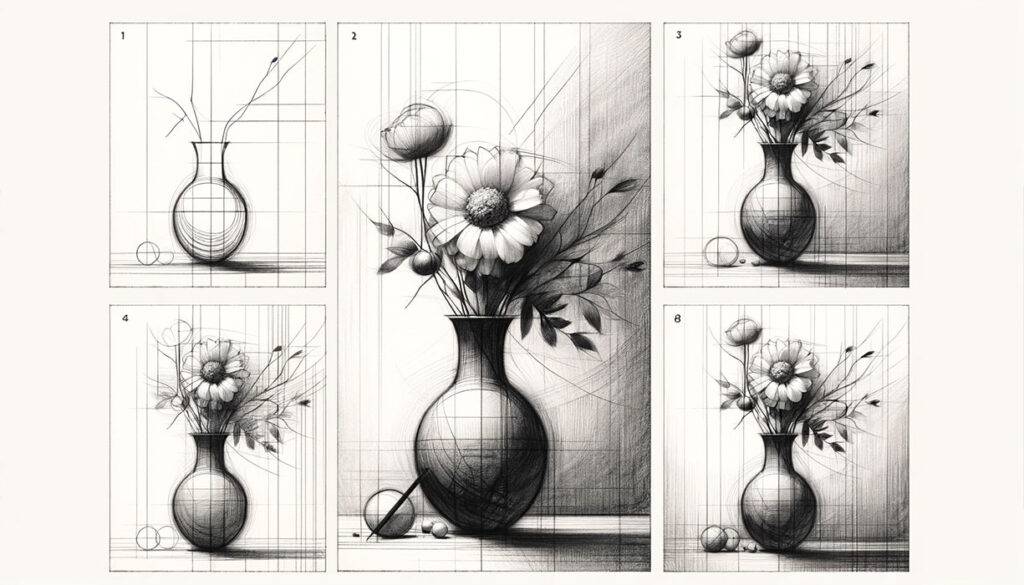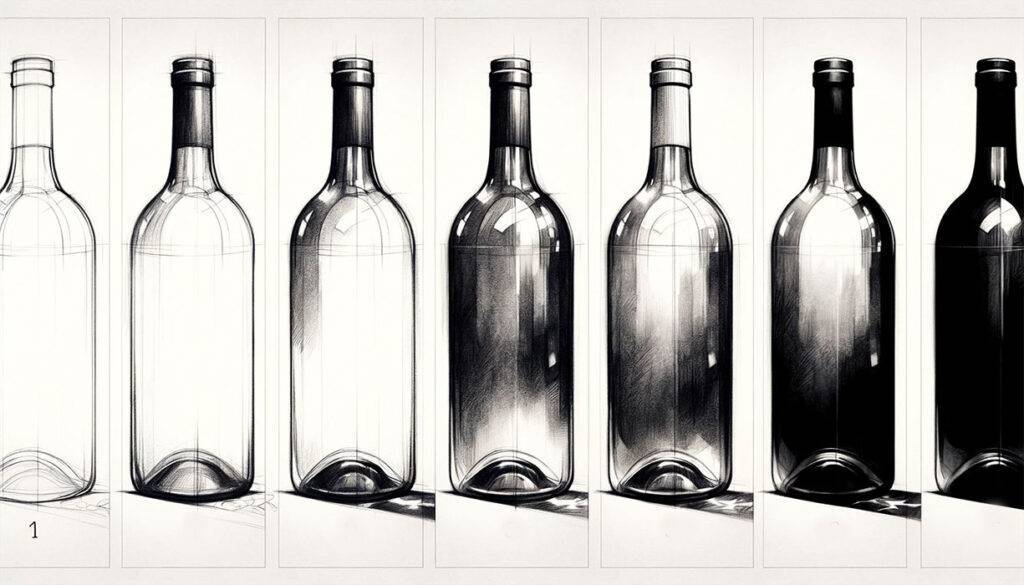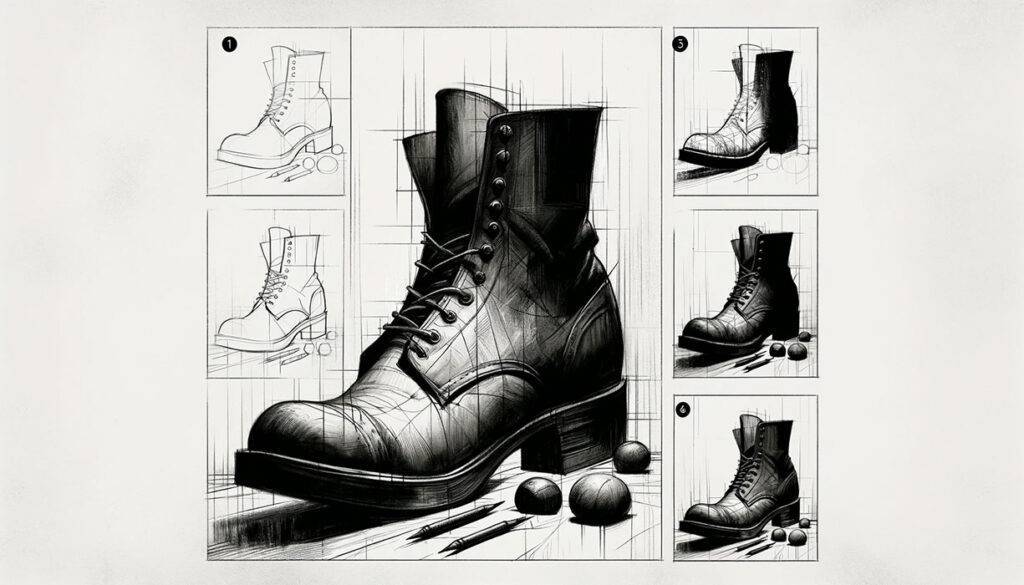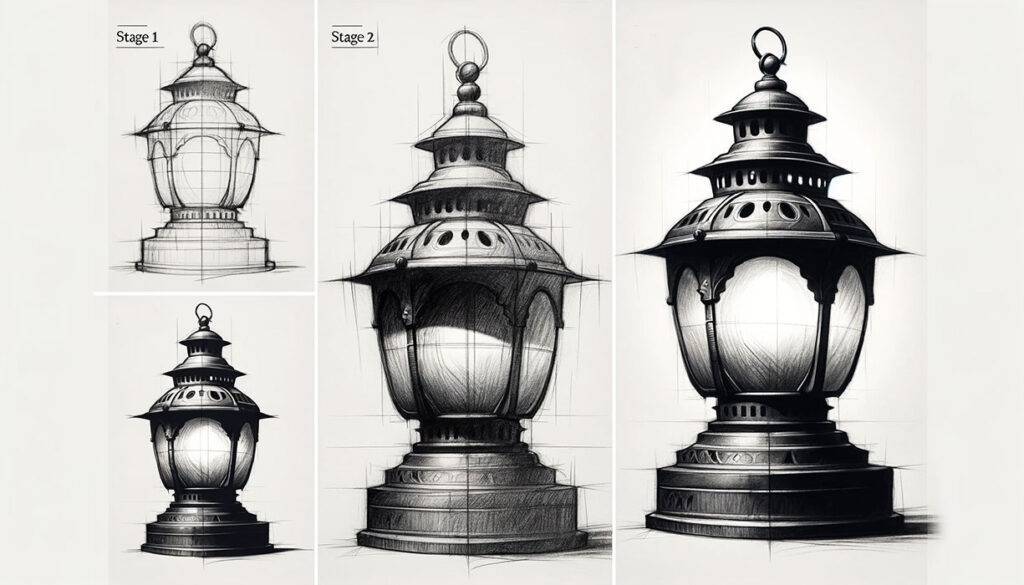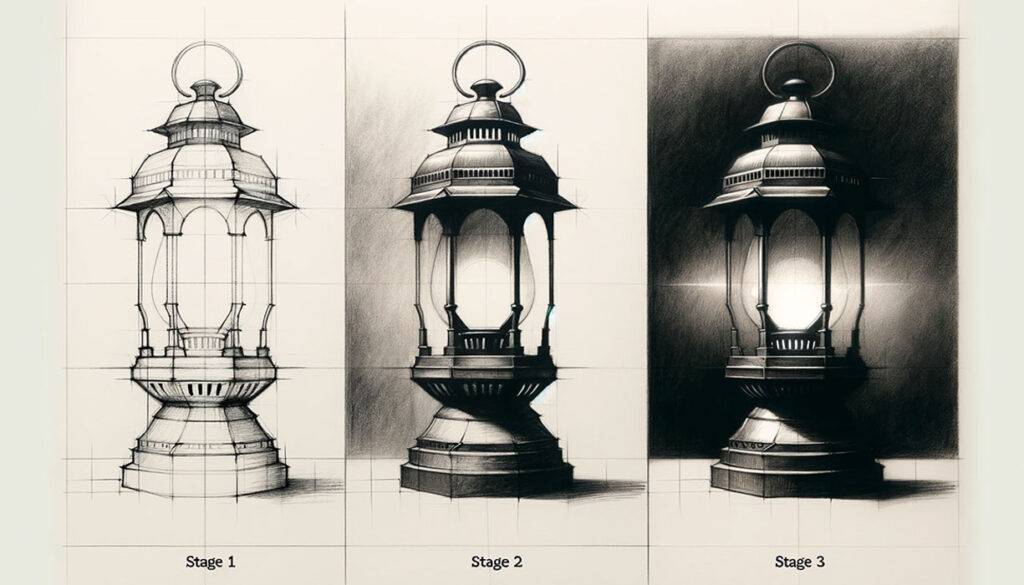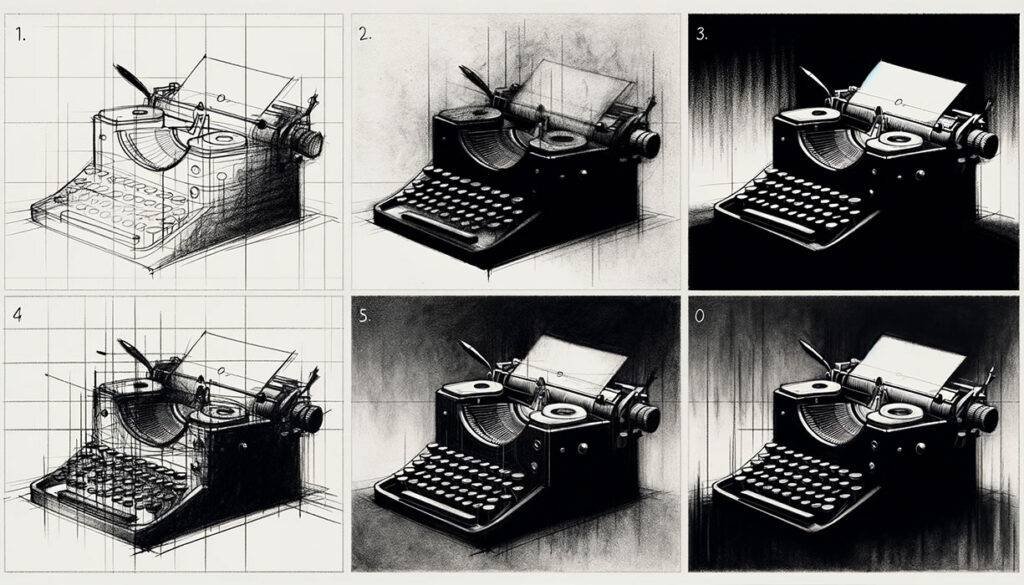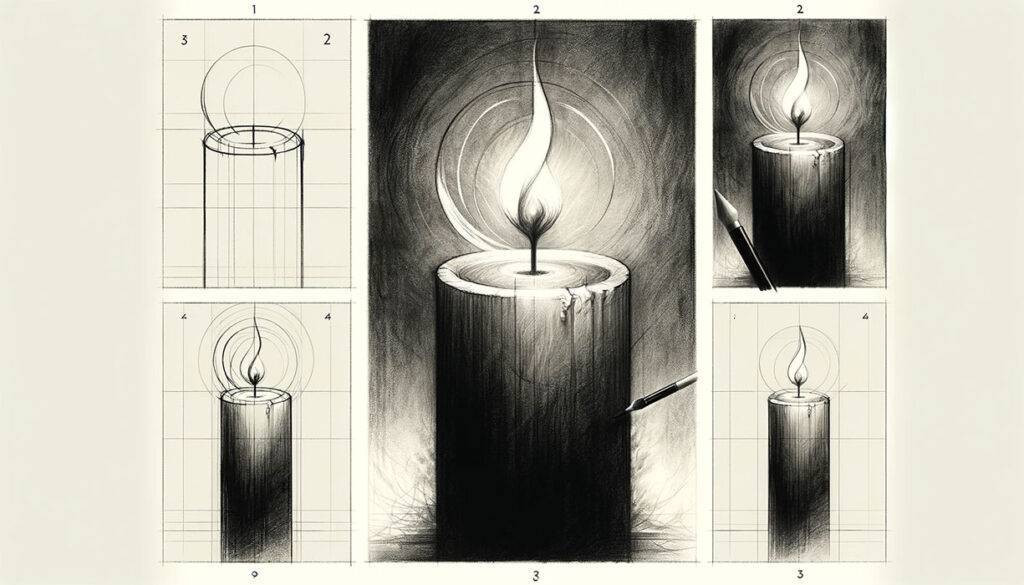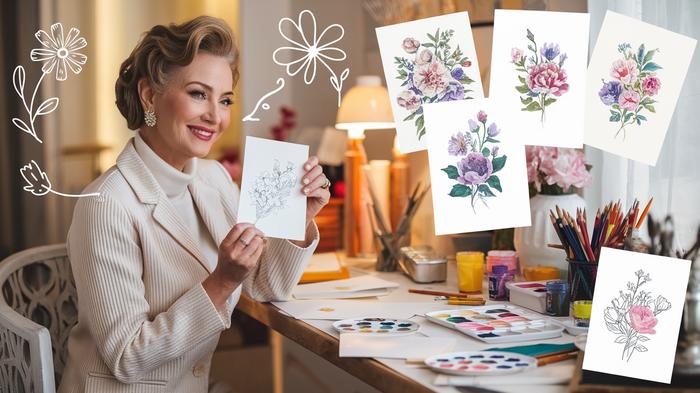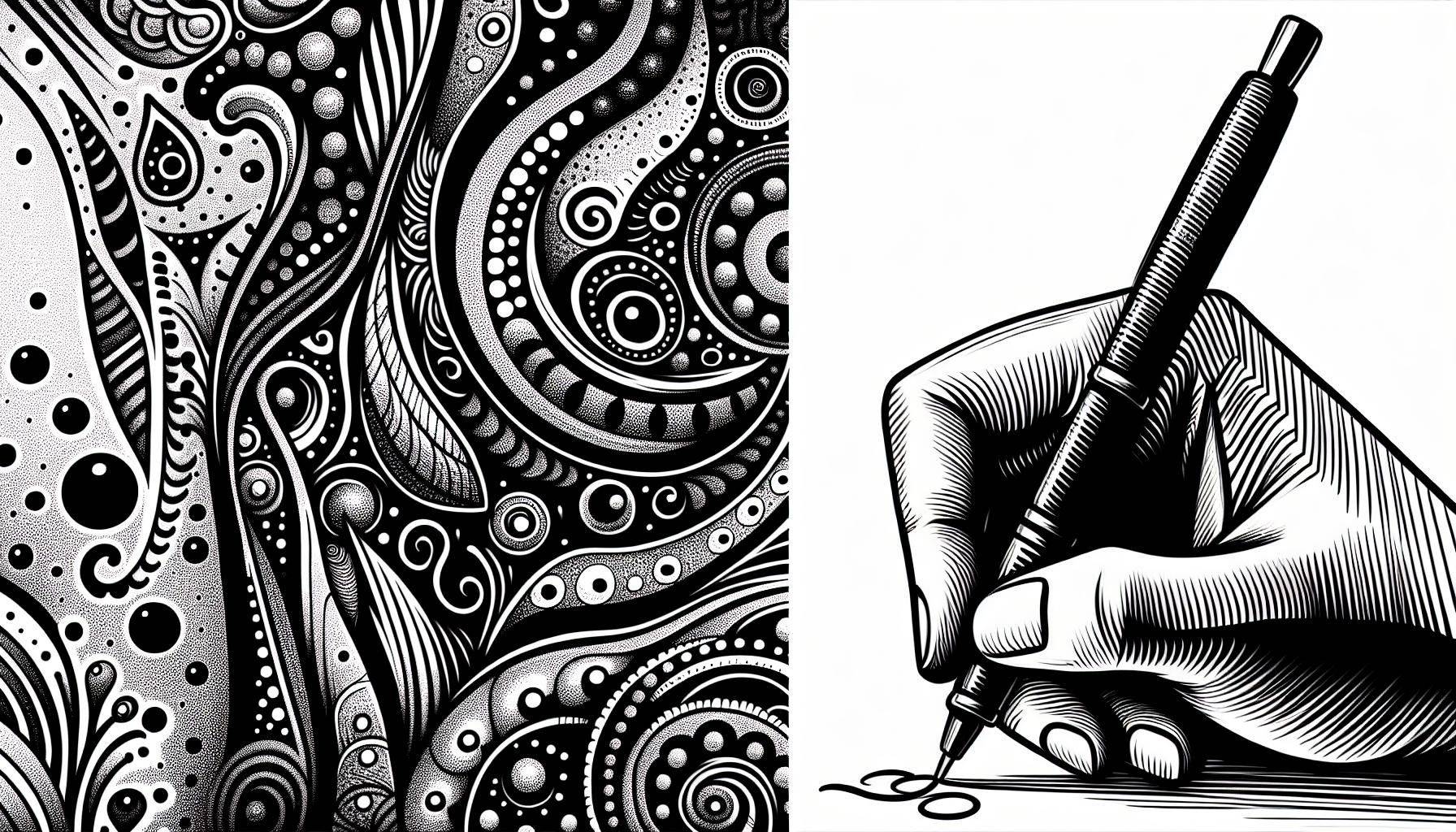Charcoal Drawing Ultimate Guide For Beginners with 124 Stunning Ideas

Charcoal drawing is a lot like adding spices to your cooking. Just like a small amount of spice can make a dish taste much better, using charcoal in your drawings can have a big impact. When you use charcoal the right way, you can create beautiful and amazing art.
It’s almost like magic! Imagine holding a piece of the dark night sky in your hand and using it to paint anything you dream of.
This guide is here to help you improve your drawing skills with charcoal. We will share many helpful tips and clever techniques that are easy to understand and follow. Also, we have prepared 124 exciting and unique ideas for you to try. These ideas will inspire you to experiment and explore new charcoal drawing methods.
Whether you’re a beginner or have been drawing for a while, these tips and ideas will be useful. We’ll show you how to handle charcoal, create different effects, and make your drawings stand out. So, get ready to learn, have fun, and create your own wonderful charcoal drawings!
Also, check Easy Pencil Drawings Secrets and 39+ Beautiful Ideas For It.
219 Easy Drawing Ideas: How-To Guides and Expert TipsTips For How To Draw With Charcoal
Start with a Soft Touch: Use light strokes when you begin your drawing. Charcoal can smudge easily, so using a soft touch helps you control how dark your lines are.
Try Different Pressures: Change how hard you press with the charcoal. This will let you control the shading. Press lightly for gentle, subtle shades, and press harder to get darker, more intense tones.
Mix and Smooth: Use your fingers, a tissue, or special tools called blending stumps to mix the charcoal on your paper. This helps create smooth shading changes and makes textures look more real.
Be Creative with Erasers: Erasers are not just for fixing mistakes. You can use them to lightly remove some charcoal, which helps make brighter areas and adds detail and depth to your drawing.
Keep Your Drawing Safe: Once you’re done with your artwork, spray it with a special fixative spray. This keeps the charcoal from smudging and helps keep your drawing looking great for a long time.
Charcoal Drawing Basics
Let’s explore the magic of charcoal drawing! First off, they can be sticks or pencils, each with its own special power. Additionally, artists use these tools to make art enchanting.
Subsequently, learning basic charcoal drawing techniques is like dancing with shadows and light. It’s about making pictures that jump off the page and pull the viewer into your world. Moreover, a key skill in this art is shading. This is akin to whispering in different volumes – sometimes quietly, sometimes loudly.
Finally, getting this balance right makes your drawings come alive, just like adding different layers of flavor to a dish.
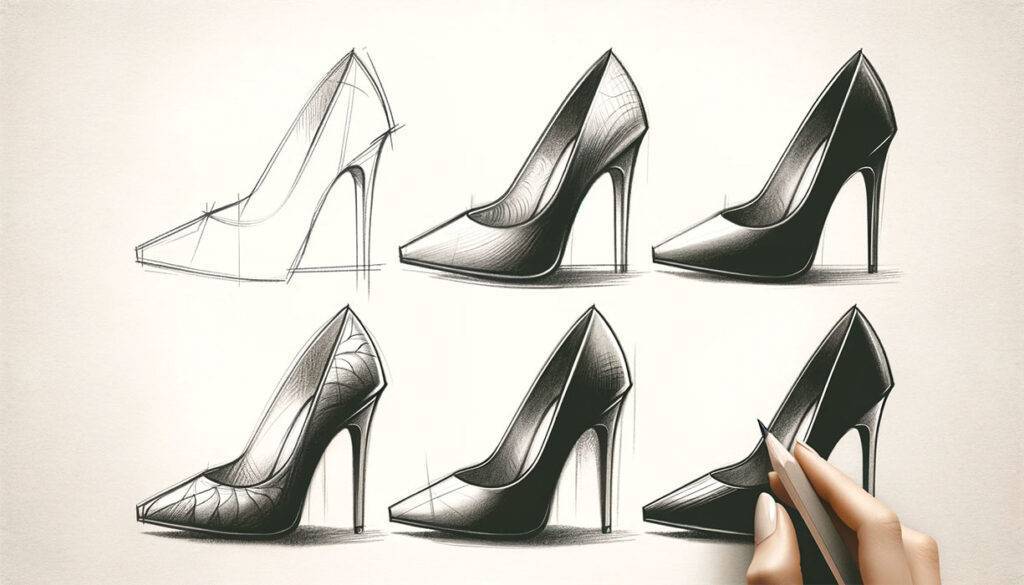
Start Your First Charcoal Drawing
If you’re just starting out, beginning with small projects is a good idea. Initially, try drawing something simple that won’t move, like a single apple or a mug sitting on a table. These easy tasks are a great way to learn and get better at using charcoal.
Furthermore, keep in mind that every famous artist started as a beginner. They kept trying and never gave up, even when they were just using crayons. Importantly, the key to becoming good at drawing is to keep practicing and not give up. Think of persistence and practice as your special ingredients to success.
219 Easy Drawing Ideas: How-To Guides and Expert Tips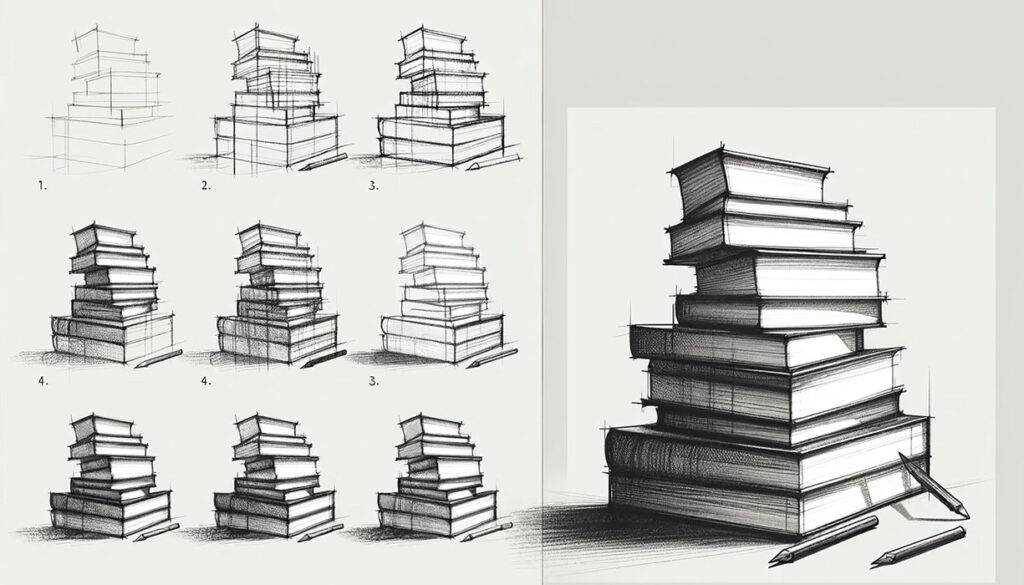
Getting Started With Charcoal Drawing
Understanding Charcoal:
- Charcoal is a carbon-rich material used for drawing
- It comes in various forms: vine charcoal, compressed charcoal, and charcoal pencils
- Vine charcoal is softer and more blendable, while compressed charcoal creates darker, defined lines
- Charcoal pencils combine the qualities of both vine and compressed charcoal
Essential Tools:
- Special paper for charcoal drawing, rougher to help charcoal stay on the paper
- Different grades of charcoal pencils for various shades and effects
- Blending tools such as tortillons or blending stumps for smudging and blending
- Kneaded eraser, a moldable eraser for lifting off charcoal gently
- Fixative spray to protect finished artwork from smudging or fading
Charcoal Paper:
- Specially designed paper for charcoal drawing, slightly rough for better charcoal adherence
- It helps to retain the charcoal’s texture and allows for a smoother drawing experience

Charcoal Pencils:
- They come in various grades, indicating different levels of darkness
- Offer control and precision similar to regular pencils but with charcoal’s unique qualities
Blending Tools:
- Tortillons or blending stumps help in smudging and blending charcoal for smooth transitions between shades.
- It is essential for creating depth and achieving various textures in drawings
Kneaded Eraser:
- Unlike traditional erasers, it’s moldable and can be shaped for precise erasing
- Lifts off charcoal gently without damaging the paper, allowing for corrections without leaving marks
Fixative Spray:
- Acts as a protective layer sprayed onto finished charcoal artwork
- Prevents smudging or fading, preserving the drawing for a longer time
These tools and materials form the foundation for beginning your journey into the world of charcoal drawing. They enable artists to experiment, create, and develop their skills while enjoying the unique qualities and versatility of charcoal as a medium for artistic expression.
219 Easy Drawing Ideas: How-To Guides and Expert Tips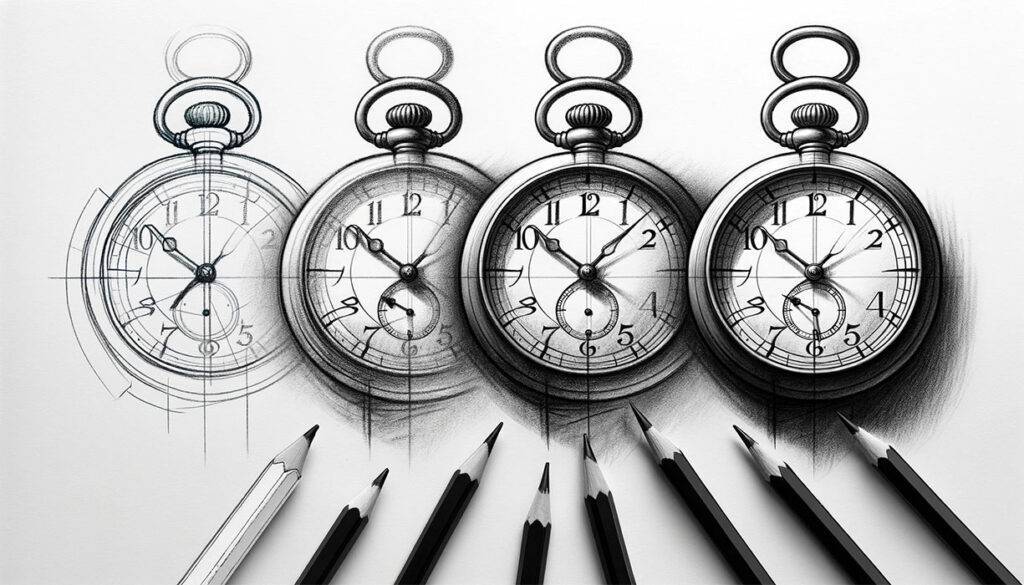
Importance Of Charcoal In Drawing
Charcoal is very important in drawing. It’s like a secret tool for artists because of its special features. Charcoal is flexible and has unique qualities that make it a favorite for artists with different styles and skills. Whether you are a beginner or very experienced, charcoal can be a great choice for creating art.
Expressiveness and Versatility:
Charcoal is known for being expressive and versatile. It’s really good at making strong contrasts, rich textures, and deep, dark tones. Charcoal can be used in many ways so that artists can make all sorts of effects. They can make bold and dramatic marks or gentle, smooth changes in shading. This flexibility lets artists show feelings, depth, and a sense of realness in their art.
Exploration of Shadows and Highlights in Charcoal Drawings:
Charcoal is really good at creating contrast, which helps artists explore shadows and light in new ways. They can play with light and dark to make their drawings look real and alive. This can add mood, excitement, and depth to the art. Charcoal lets artists easily switch from light to dark and blend them together smoothly. This gives them many options to show three-dimensional shapes on a flat, two-dimensional surface.
219 Easy Drawing Ideas: How-To Guides and Expert Tips
Immediate and Bold Impact:
Charcoal makes strong marks quickly on the drawing surface. This lets artists work fast and with confidence. It supports a lively and unplanned way of drawing, which helps with trying new things and being creative. Because charcoal is something you touch and feel, artists can really connect with their work. It adds a personal touch and closeness between the artist and their drawing.
Learning Tool and Exploration:
For those just starting out, charcoal is a great tool to learn with. It’s easy to fix mistakes with charcoal by erasing or blending, so beginners can try new things without worrying about messing up their artwork. Also, charcoal is simple to use and easy to get, which makes it perfect for new artists to practice and improve basic drawing skills.
Unique Aesthetic and Timelessness:
The raw, textured appearance of charcoal drawings possesses a unique aesthetic charm. The richness of charcoal’s black and gray tones lends a timeless quality to artworks, creating an allure that transcends trends and periods. Charcoal drawings often evoke a sense of nostalgia and depth, captivating viewers with their raw and unfiltered essence.
219 Easy Drawing Ideas: How-To Guides and Expert Tips
Check: Unlock the Secrets of Aubrey Beardsley Illustrations and Create Your Own Masterpiece
Different Types Of Charcoal
Vine Charcoal:
Made from burnt willow or grape vines, vine charcoal is soft, lightweight, and easily erasable. It creates lighter and more delicate lines compared to other types. Vine charcoal is excellent for initial sketches, shading, and creating subtle gradients due to its blendable nature.
Compressed Charcoal:
This type of charcoal is created by compressing powdered charcoal into sticks or pencils. It’s denser and darker than vine charcoal, providing deeper, richer black tones and more defined lines. Compressed charcoal is great for creating bold, intense lines and achieving strong contrasts in drawings.
Charcoal Pencils:
These are charcoal sticks in a wooden pencil-like form. Charcoal pencils offer convenience and control, allowing artists to create precise lines and details while retaining the charcoal’s rich qualities. They come in various hardness grades, similar to graphite pencils, ranging from soft to hard for different tonal values.
219 Easy Drawing Ideas: How-To Guides and Expert Tips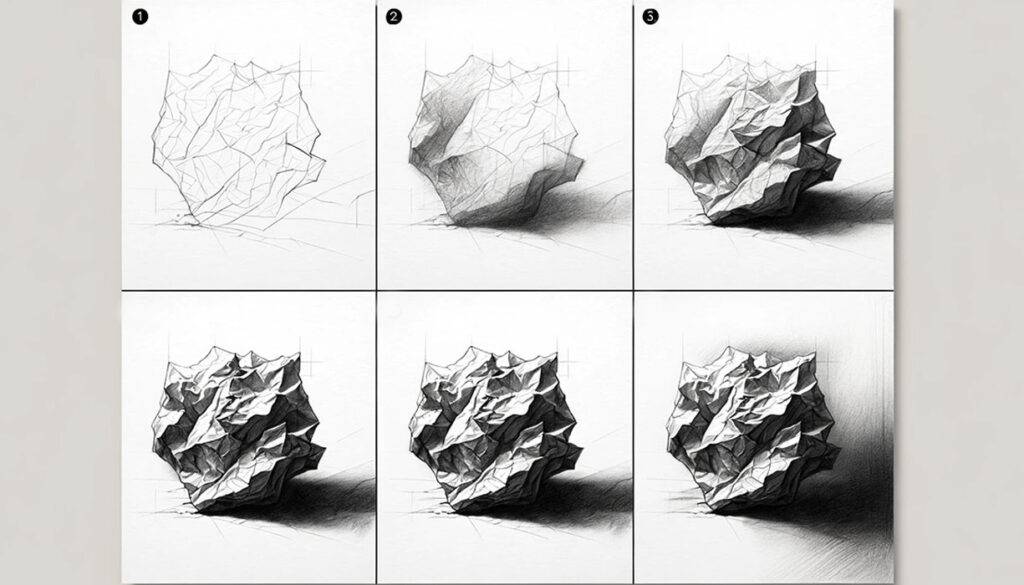
Powdered Charcoal:
This form of charcoal comes in loose powder form and is useful for creating broad areas of tone quickly. It can be applied using brushes, fingers, or blending tools to cover larger areas or create smooth gradients.
Willow and Compressed Charcoal Sticks:
Willow charcoal sticks are similar to vine charcoal but made from willow twigs. They’re softer than compressed charcoal but harder than vine charcoal, providing a balance between the two. Compressed charcoal sticks offer consistent density throughout and are excellent for creating bold, expressive strokes.
Charcoal Blocks:
These are larger blocks or chunks of compressed charcoal used for covering larger areas or creating broad strokes. They’re versatile and can be broken into smaller pieces for different drawing techniques.
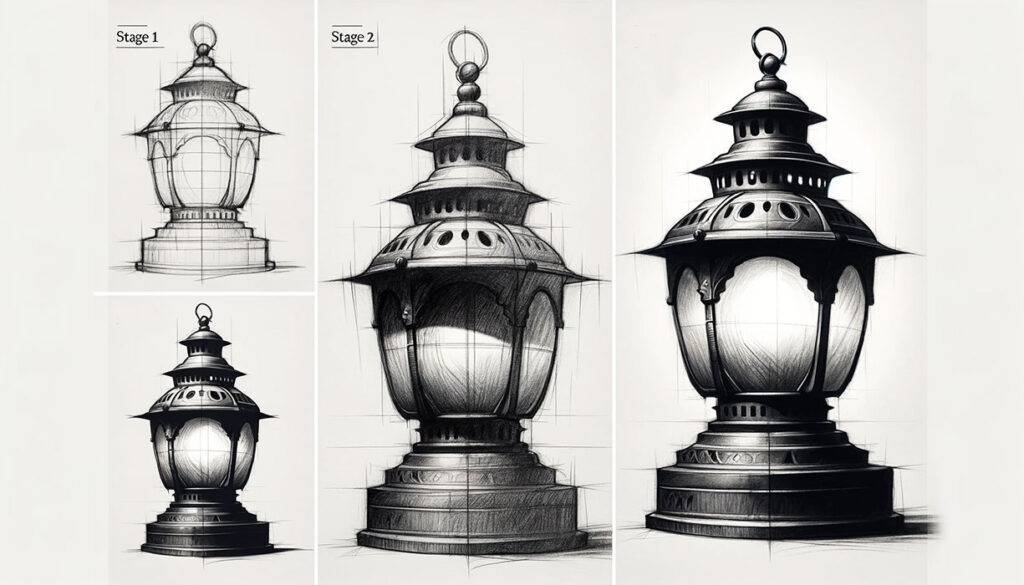
Pro Tips For Charcoal Drawing
-
Start Light, Build Dark:
Begin your drawing with light strokes and gradually build up darker tones. Charcoal is bold, so it’s easier to add darkness than to remove it. Layering gradually helps create depth and avoids overwhelming the drawing with heavy lines too soon.
-
Experiment with Different Charcoals:
Try various types of charcoal (vine, compressed, pencils) to understand their characteristics. Each type offers unique qualities—blend-ability, darkness, and texture—exploring these will expand your artistic options.
-
Use Blending Techniques:
Employ blending tools like tortillons, blending stumps, or even your fingers to create smooth transitions between light and shadow. Experiment with different blending pressures and directions for varied effects.

-
Explore Erasing Techniques:
Use a kneaded eraser to selectively lift off charcoal for highlights or corrections. It’s a versatile tool that allows for precise erasing without damaging the paper, enabling you to refine details or create subtle highlights.
-
Experiment with Paper:
Try different surfaces suitable for charcoal drawing, such as textured paper or toned paper. Each surface reacts differently to charcoal, offering diverse textures and effects. Find the one that suits your style and desired outcome.

-
Focus on Contrast:
Charcoal excels in creating contrasts between light and dark. Pay attention to the contrast in your drawing, as it adds depth and drama. Highlighting the extremes enhances the overall impact of your artwork.
-
Practice Different Mark-Making:
Experiment with various charcoal strokes—hatching (parallel lines), cross-hatching (intersecting lines), stippling (dots), or even using the side of the charcoal stick for broad strokes. Mixing different techniques adds dynamism to your drawings.

-
Work on Perspective and Depth:
Use charcoal to convey depth and perspective in your drawings. Explore techniques such as atmospheric perspective (creating depth through contrast and fading tones) or linear perspective to add realism to your artwork.
-
Study Lighting and Shadows:
Understand how light falls on objects and creates shadows. Observing and replicating these light and shadow patterns in your drawings adds realism and depth to your subjects.
-
Embrace Experimentation:
Don’t be afraid to experiment and push the boundaries of traditional charcoal drawing. Combine charcoal with other mediums, mix techniques, or try unconventional methods. Art is about exploration and finding your unique style.
